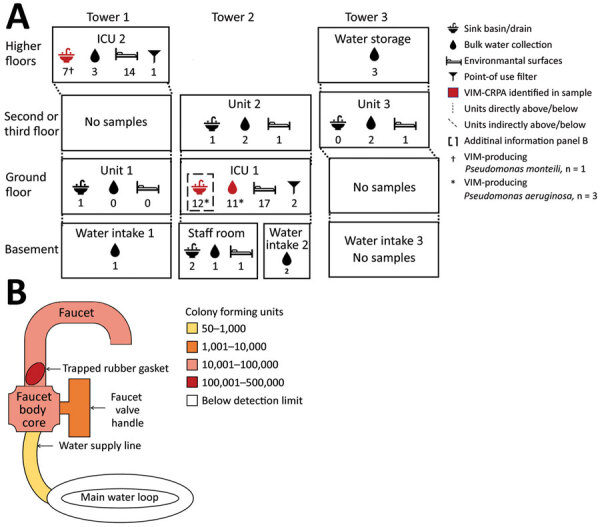Figure 1.

Environmental sampling scheme at hospital A from a study of CRPA in acute-care hospital specialty care unit, Texas, USA. A) Collection location in hospital and number of each sample type (icons with numbers underneath) collected (N = 85). We selected units and rooms for environmental sampling on the basis of chart review, focusing on where patients who developed clinical infections were located; patient rooms were those where patients with VIM-CRPA had been previously located. Three patients developed clinical infections while in ICU 1 and 3 while in ICU 2. Thirteen other patients from several medical or surgical units also developed clinical infections. Samples from which we recovered >1 VIM-producing isolate are indicated in red. We identified VIM-CRPA from 3 sites related to a single sink in room A of ICU 1: the sink drain, the interior surface of the dialysis faucet, and bulk water from a dialysis faucet used as the water source for the reverse osmosis unit of portable dialysis machines. We identified VIM-producing Pseudomonas monteilii (†) in a single sink basin sample of 1 room in ICU 2. B) Schematic view and heatmap of colony forming units identified by culture at selected internal surface locations within the faucet and water supply used for portable dialysis in ICU 1, room A. CRPA, carbapenem-resistant Pseudomonas aeruginosa; ICU, intensive care unit; VIM, Verona-integron-encoded metallo-β-lactamase.
